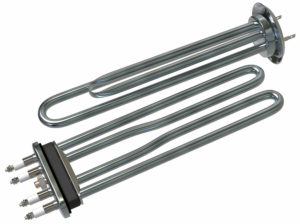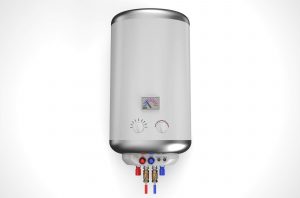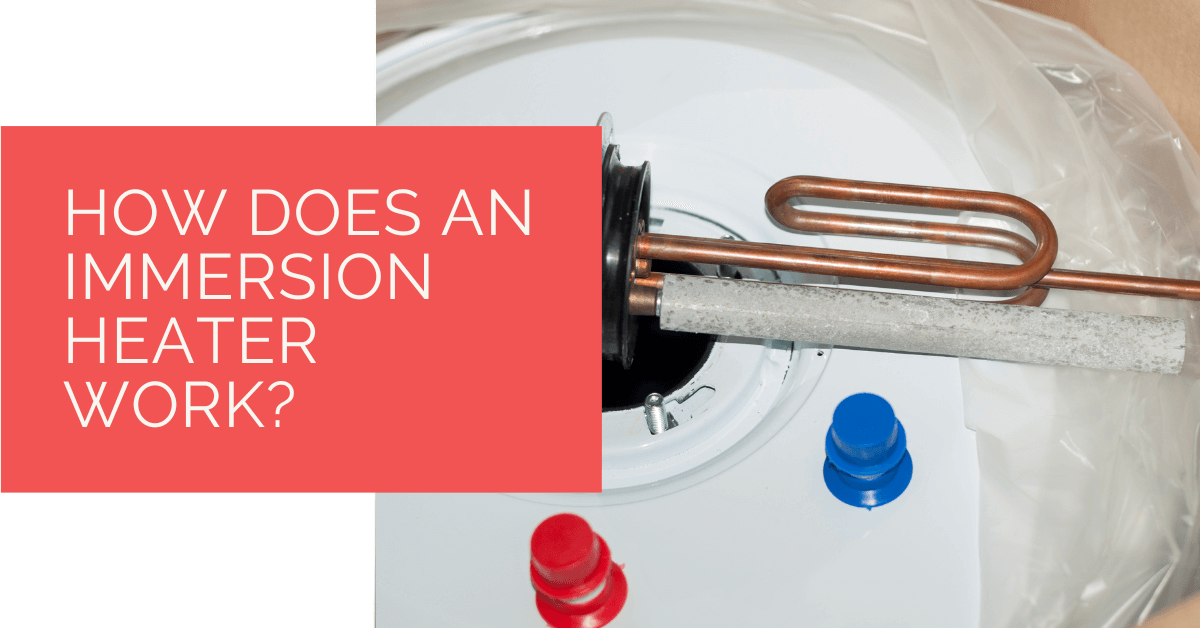The idea of a hot shower would be refreshing as we slowly approach winter. Indeed, a heating system would become a dire necessity because researchers predicted a bleak winter this year in the UK.
Well, one way to deal with the freezing winters is by installing a source of hot water. Introducing the workings of immersion heaters!
Unlike central heating devices, this is efficient, economical, and fast for heating cold water. Ideally, it works using a heating element in an enclosed jacket. It heats the sheath that touches the liquid, utilising the conductivity power.
If you are intrigued by this, read more about such bayonet heaters.
Contents
Key Takeaways
- An immersion heater is an efficient and economical device used to heat water, commonly installed in water tanks, and it can also be employed for industrial purposes such as heating solvents and regulating chemical temperatures.
- Immersion heaters use an electric resistance heater to heat the water from inside the tank, with two main methods – direct insertion into the liquid or indirect heating through an enclosed pipe. They offer precise temperature control and can be powered by electricity or solar panels.
- Various types of immersion heaters are available, including L-shaped, pipe plug, solar-powered, and more, catering to different heating requirements and industries, such as nuclear power, waste management, and food processing.
What Is an Immersion Heater?
An immersion heater is a device that you install in water tanks. Inadvertently it turns any container containing a liquid into a hot water tank.
In some cases, these devices come in handy for industrial uses like heating solvents, oil, or gas. However, the most common usages include:
- Heating water tanks for your home
- Using it for steam boilers for factories
- Regulating the temperature of chemicals
Technically, this heater is nothing but a high-performing metal coil fitted within a hot water cylinder. Some refer to this as an electric water heater with similar workings to a kettle. Earlier, every UK household’s heating system relied on an immersion heater.
Note: If your boiler breaks, there will be no heating or hot water produced by such devices.

The Workability of An Immersion Heater
Most houses in the UK use immersion heaters to get heated water. As mentioned earlier, these are mounted on hot water cylinders and come with a metal tube with a temperature sensor.
It also has an electric resistance heater of 3 KW for domestic usage.
As opposed to gas heaters, these devices heat the water from inside the cylinder or tank. So, how does it work? When inserted and activated, the sheath enclosed in the jacket gets heated, increasing the liquid’s temperature.
There are two types of heating methods, namely:
- Direct – It gets inserted directly into or fitted on the side of the liquid.
- Indirect – You insert this into a close-ended pipe and then put it into the liquid.
From a technical perspective, direct heaters work by coming in contact with the fluid once positioned. It runs the electric current through the element and transfers it to the liquid.
On the other hand, the indirect heater reaches the desired temperature by heating the air inside the pipe, creating an oven effect. You can choose indirect heaters because they cannot have any chance of corroding or contaminating the fluid.
Did you know that the amount of liquid and power level of the heater will determine the time taken? Well, when you examine this device, you will find elements like:
- Power density and wattage regulator
- Enclosure and temperature range detector
- Sheath material and heating element
The thermostatic control will also ensure a constant temperature and will automatically turn on or off. While solar-powered ones only switch on during peak hours, electrical immersion heaters can do it all day long.
So, you need not worry about keeping your immersion heater on because it has a regulatory feature.

Is the Heating Process Similar to A Kitchen Kettle?
Some compare these heaters to a kitchen kettle due to the heating process. However, the electric current passed through the heater is more potent than a kettle.
Indeed, you can consider these as large-scale kitchen kettles.
It has a thermostat just like kettles to help monitor the water’s temperature in the tank. But, unlike the kitchen utensil, the immersion heaters work towards balancing the temperature after it falls below a certain point.
Both devices use convection current and get connected to the insolating switch.
Types of Immersion Heaters
Apart from dividing immersion heaters into indirect and direct, there are ways to further segregate them based on insertion techniques. Some of the commonly used devices are:
- Pipe plug
- Quartz
- Circulation
- Over-the-side
- Flanged
- Screw plug
- L-shaped
- Solar-powered
- Drywell
All of these are possible due to the advancements in innovative technologies that expanded the varieties. So, try and choose one that has a design suitable for your heating requirements.
Remember that not all varieties are suitable for all forms of materials, fluids, or solutions. At the same time, they will not use the same amount of electricity either.
Fun Fact: These devices can be used in nuclear power, waste management, oil/gas, food processing, and brewing industries as well.
Heat Pump Source: Reliable Heating and Cooling Solutions
At Heat Pump Source, we take pride in our unwavering commitment to serving the UK with top-tier HVAC solutions. From the efficiency of heat pumps and the cool relief of air conditioning to the warmth of boilers, radiators, and underfloor heating, our dedicated team is always at the forefront of innovation. We understand the unique needs of every household and business, and we strive to provide dependable health and cooling products and services that are tailored just for you. Ensuring your comfort and satisfaction is our utmost priority. Whether you have questions, need guidance, or require support, we’re always here to assist. Please don’t hesitate to contact us; we’re eager to be of service.
The Bottom Line
Now, you have a clear idea about how to regulate the temperature of the water during winter. You no longer have to install gas heaters and wait for a steady gas supply for it to work.
Some immersion heaters use electricity, while others get powered by solar panels. Besides, the best heaters include L-shaped, pipe plugs, solar-powered, etc. Irrespective of the type you use, you will achieve the desired temperature of the water.
These work by using electrical power to heat the stealth in the jacket, which uses the heating element to regulate the liquid’s temperature. So, are you ready to face UK’s winter this season?
About the Author
At Heat Pump Source, our articles are the product of a collaborative effort among a team of highly skilled HVAC experts. Our dedicated professionals, hailing from diverse backgrounds in heating, ventilation, air conditioning, and refrigeration, contribute their extensive knowledge and experience to every piece of content. This multidisciplinary approach ensures comprehensive coverage. Our commitment is to deliver authoritative, reliable, and tailored advice to meet the unique needs of every household and business across the UK.

